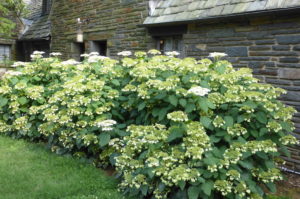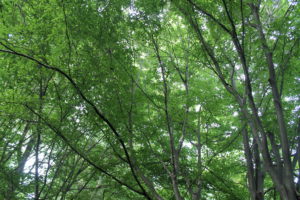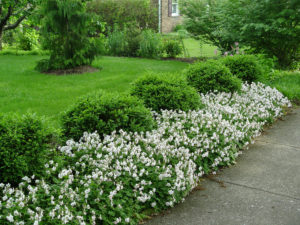Gold Medal Plants of 2020
November 19th, 2019
One of the best resources for making wise plant picks in Pennsylvania gardens is the Pennsylvania Horticultural Society’s Gold Medal Plant Program.
Each year, a panel of regional plant experts gets together to hash out what are some of the best trees, shrubs, evergreens, and perennial flowers that deserve greater use in our landscapes.
The criteria is that the plants have to be hardy in Zones 5 to 7, have to be solid all-around performers, should be attractive in more than one season, and preferably be resistant to deer browsing but beneficial ecologically.
The deciding factor is that they’re under-used and/or under-known.
The PHS Gold Medal panel has been making picks since 1979, originally starting with just woody plants but expanding into perennials five years ago.
Plants are nominated from submissions by home gardeners, garden designers, horticulturists, landscape architects, nursery owners, and propagators.
I’ve been on the panel for about a dozen years now, and I can tell you a lot of thought and input goes into the selections. More nominees get rejected than selected. Even one significant drawback can be enough to derail a plant.
Sometimes we pick a whole species, if the straight species is a superior performer or if multiple varieties of a species are all pretty good.
Other times, a particular variety is singled out as a Gold Medal-winner.
I’ve grouped all of the winners since 1988 in a category-by-category listing under the George’s Handy List section of my website.
PHS recently announced the new set of six winners for 2020. They’ll be on display with other Gold Medal winners at the 2020 Philadelphia Flower Show.
Here are the 2020 Gold Medal plants:
Black chokeberry ‘Viking’
This native deciduous shrub flowers white in spring, then really shines in fall with its combination of red foliage and black fruits. The fruits are edible when cooked. Grows about four to six feet tall and wide in full sun or part shade.
American hornbeam
Also known as ironwood and musclewood, this durable, slow-growing, broadly pyramidal native tree is best known for its yellow-orange fall foliage and steely-gray bark. It gets catkins in March and small yellow nutlets in late summer. Grows 20 to 30 feet tall, ideally as an under-story tree in the dappled light of taller neighbors or out of direct afternoon sun.
Smooth hydrangea ‘Haas’ Halo’
Another cultivar of a native shrub, ‘Haas’ Halo’ gets large, white, lacecap flowers (often a foot or more across) for much of summer along with healthy blue-green leaves. It also tolerates root competition well, has sturdy stems, and is slow to wilt in hot, dry spells. Grows about four feet tall and wide, ideally in morning sun and afternoon sun, although it’ll do mostly shaded spots and even full sun with adequate moisture.
Coreopsis ‘Zagreb’
This is the best variety of threadleaf coreopsis that I’ve seen out of a rather large glut of cousins. It’s a long bloomer with bright yellow flowers and often reblooms in late summer if sheared after the first round of flowers fades. ‘Zagreb’ is a cultivar of a native perennial and is both compact and flop-resistant, growing 12 to 18 inches tall, ideally in full sun.
Geranium ‘Biokovo’
Another of my favorite perennials, ‘Biokovo’ also was the Perennial Plant Society’s Perennial Plant of the Year for 2015. It’s a very durable and hardy perennial that spreads nicely enough to make a dense groundcover but not so rampantly as to be over-aggressive. It grows in fairly poor soil, flowers pinkish-white in late spring, and gets red foliage in fall before going bare for the winter. Grows 12 to 16 inches tall in full sun to part shade.
Dwarf Russian sage ‘Little Spire’
Russian sage is a heat- and drought-tough flowering herb that blooms in slender purple spikes for months from mid-summer through frost. Its main drawback is that it can get tall and floppy. ‘Little Spire’ is one of many new compact varieties that tops out at two to three feet tall instead of four feet or more. Grows best in full sun and well drained soil.











